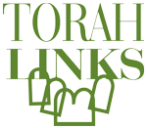The Torah, in previous portions, discussed how to set up the Mishkan (Tabernacle) and how the Jews should camp around it. In this week’s portion, Beha’aloscha, the Torah turns its attention to describing how the Jews actually functioned as a nation in the desert.
Aaron, the High Priest, is commanded to light the Menorah, the seven-branched candelabra that stood in the Mishkan. This metaphorically represents the overall responsibility of the Priests: To “enlighten” the Jews in the service of G-d by acting as teachers and role models.
Moses is commanded to make two silver trumpets to be sounded when the Jews are about to travel, before battle, or to proclaim a holiday. G-d instructs the Jewish People to journey into the desert when the ever-present cloud of glory lifts from above the Tabernacle and to set up camp again wherever it rests.
The People journey to the wilderness of Paran where they complain about the food in the desert. They do not appreciate the Manna, the heavenly bread that appeared at the Jewish camp every morning. The Al-mighty then sends a massive quantity of quail for the Jewish people to eat, but those who had complained die without enjoying the newly acquired meat.
Miriam, Moshe's older sister, makes a negative remark about Moshe. As a result of her lashon hora-- evil speech about one's fellow man--she is afflicted with tzora'as — (leprosy) and is exiled from the camp for one week. The Jews waited for Miriam to heal before they continued to travel. �)(d�pg

